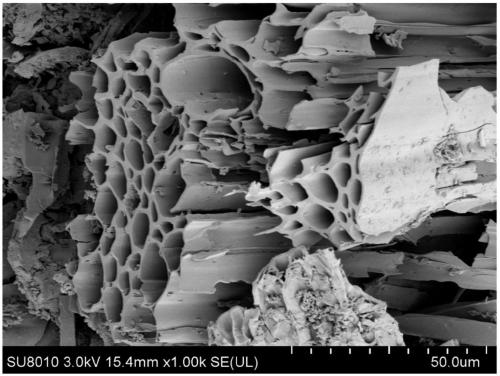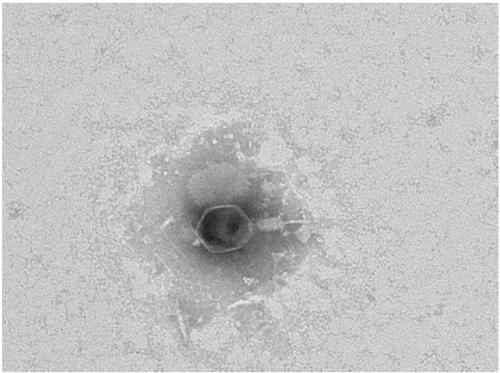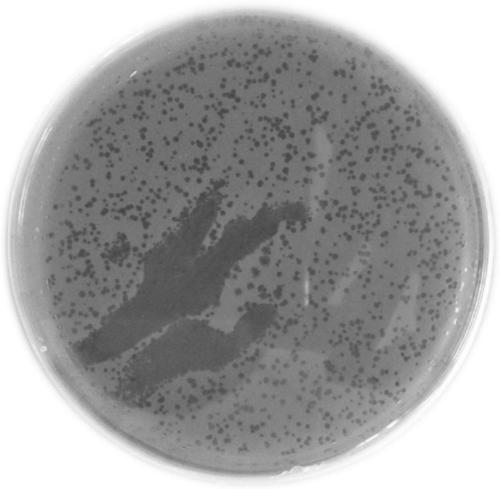Bacteriophage and application of same to soil remediation
一种噬菌体、土壤的技术,应用在噬菌体领域,能够解决微生物群落功能稳定性和多样性生态风险评估没有受到重视、微生物群落功能稳定性和多样性的相关生态风险评估匮乏、缺少抗生素抗性致病细菌同步灭活等问题,达到改良土壤理化性质、抗逆能力强、孔隙度发达的效果
- Summary
- Abstract
- Description
- Claims
- Application Information
AI Technical Summary
Problems solved by technology
Method used
Image
Examples
Embodiment 1
[0034] The potting soil for the test was collected from the polluted soil around the manure accumulation pool of the Hengliang Dairy Farm in Nanjing City, Jiangsu Province. The basic physical and chemical properties of the soil: sand 23.8%, soil 45.4%, clay 31.8%, pH 7.7, total nitrogen 1.7 g·kg -1 , water-soluble nitrogen 1.7 g·kg -1 , total phosphorus 1.3 g·kg -1 , total potassium 17.5 g·kg -1 , CEC 19.4 cmol kg -1 .
[0035] Take 5 g of fresh soil samples, add 50 mL of sterile water, culture at 28 °C, 150 rpm for 5 h, centrifuge at 10 000 rpm for 5 min, filter the supernatant through a 0.22 μm membrane, take 9 mL of the filtrate and 1 mL of the growth medium Pseudomonas aeruginosa PAO1 suspension in the logarithmic phase was added to 40 mL LB liquid medium, and calcium chloride solid was added to the final concentration of the solution to 1 mmol L -1 , 30°C, 150 rpm shaker culture for 12 h, the resulting culture solution was centrifuged at 10 000 rpm for 5 min, and the...
Embodiment 2
[0038] The potting soil for the test was collected from the polluted soil around the manure accumulation pool of the Hengliang Dairy Farm in Nanjing City, Jiangsu Province. Growing Vegetables for Carrots Seoul Six Inches ( Daucus L .), Beijing Zhongnong Tianteng Vegetable Seed Company. Basic physical and chemical properties of soil: 23.8% sand, 45.4% soil, 31.8% clay, pH 7.7, total nitrogen 1.7 g·kg -1 , water-soluble nitrogen 1.7 g·kg -1 , total phosphorus 1.3 g·kg -1 , total potassium 17.5 g·kg -1 , CEC 19.4 cmol kg -1 .
[0039] Four groups of treatments were set up in the experiment: ① Control group (CK): 3 carrots were planted in each pot (cover soil 0.5-1 cm above the seeds, room temperature 20±2°C); ② Biochar treatment (B): On the basis of the control group Apply biochar (1 g / kg); ③ Phage φYSZPK treatment (P): Inoculate 100 mL on the basis of the control group with a concentration of 10 6 pfu mL -1 phage φYSZPK; ④ Combined treatment of biochar and phage φYSZPK...
Embodiment 3
[0042] The potting soil for the test was collected from the polluted soil around the manure accumulation pool of the Hengliang Dairy Farm in Nanjing City, Jiangsu Province. Plant vegetables as Hong Pin No. 1 Chaotian Pepper ( Capsicum frutescens var ), Qianshu Baihua Seed Industry. Basic physical and chemical properties of soil: 23.8% sand, 45.4% soil, 31.8% clay, pH 7.7, total nitrogen 1.7 g·kg -1 , water-soluble nitrogen 1.7 g·kg -1 , total phosphorus 1.3 g·kg -1 , total potassium 17.5 g·kg -1 , CEC 19.4 cmol kg -1 .
[0043] Four groups of treatments were set up in the experiment: ① Control group (CK): Plant 3 chili peppers in each pot (cover soil 0.5-1 cm above the seeds, room temperature 25±2°C); ② biochar treatment (B): On the basis of the control group, biochar (1 g / kg) was applied; ③ Phage φYSZPK treatment (P): On the basis of the control group, 100 mL was inoculated with a concentration of 10 6 pfu mL -1 phage φYSZPK; ④ Combined treatment of biochar and phag...
PUM
| Property | Measurement | Unit |
|---|---|---|
| diameter | aaaaa | aaaaa |
Abstract
Description
Claims
Application Information
 Login to View More
Login to View More - R&D
- Intellectual Property
- Life Sciences
- Materials
- Tech Scout
- Unparalleled Data Quality
- Higher Quality Content
- 60% Fewer Hallucinations
Browse by: Latest US Patents, China's latest patents, Technical Efficacy Thesaurus, Application Domain, Technology Topic, Popular Technical Reports.
© 2025 PatSnap. All rights reserved.Legal|Privacy policy|Modern Slavery Act Transparency Statement|Sitemap|About US| Contact US: help@patsnap.com



